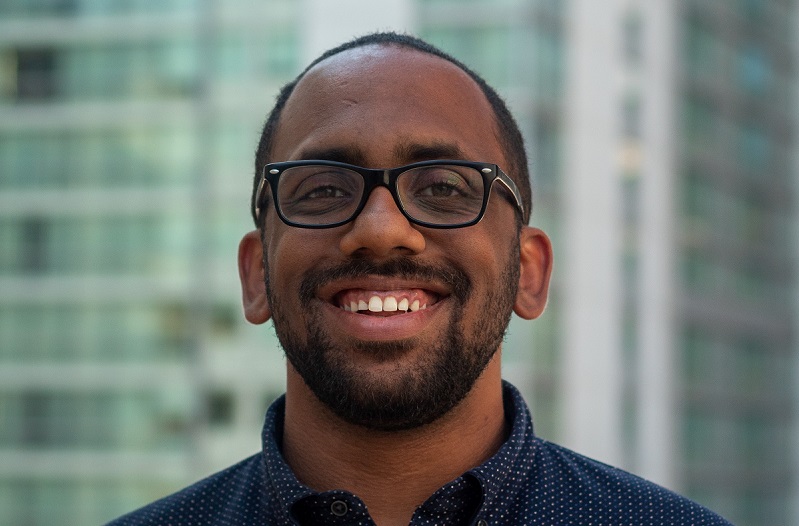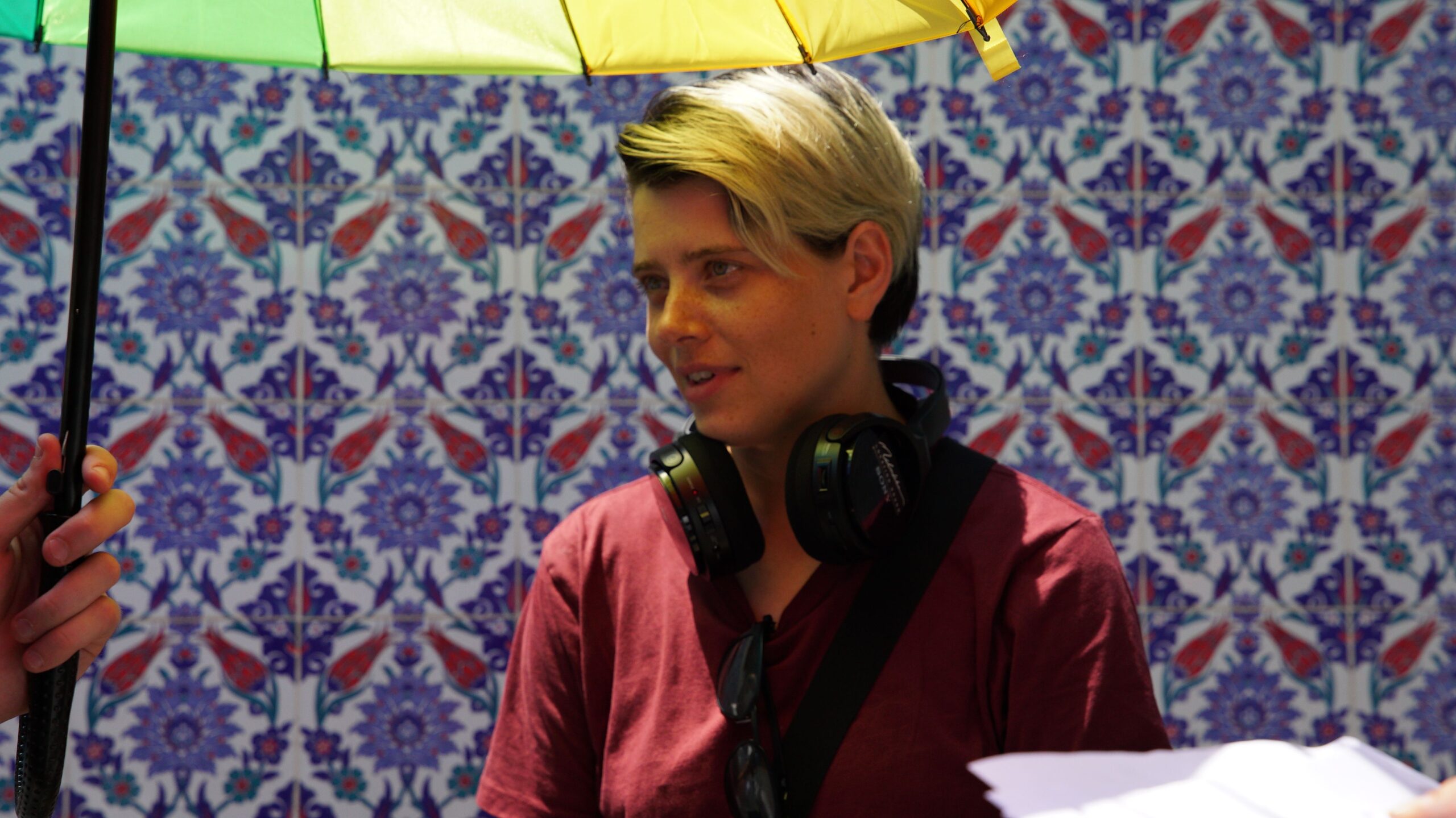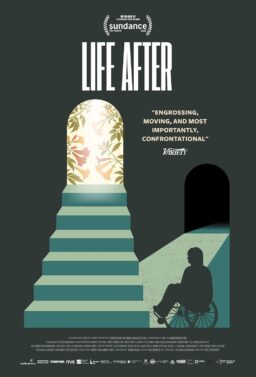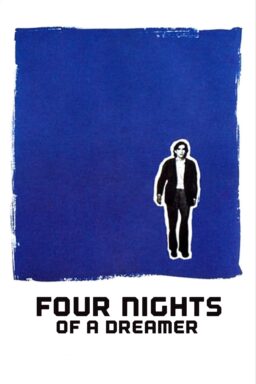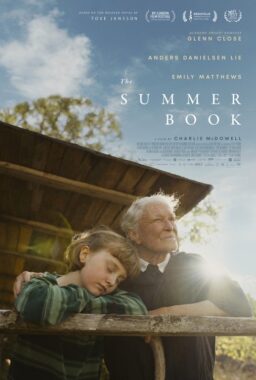A few months ago at the Karlovy Vary Film Festival, I sat in silence, fully dazed, as the credits rolled on a film that seemingly kicked me in the throat and also gave me a warm hug. The best movies, in that way, have a tendency to perform the incomprehensible; they’re familiar yet distant in the way of a far-flung memory. When you lose a parent, especially at a young age, those memories are the fabric of you. And their meaning and design take time and close inspection to reveal itself. Charlotte Wells’ feature debut “Aftersun” is that closer inspection, a devastatingly personal coming-of-age film that follows a father and daughter on holiday in Turkey.
Wells’ short films have already hinted at her keen ability to unearth significant clarity from emotionally opaque characters: “Laps” sees a woman experiencing a sexual assault on the train in the middle of rush hour; “Blue Christmas” concerns a haggard tax collector spending his holiday avoiding his wife’s mental illness; “Tuesday,” a thematic precursor to “Aftersun,” captures a daughter visiting the home of her deceased father. The characters in these films are all battling denial, a defense mechanism that Wells doesn’t merely explore in “Aftersun.” She instead sizes up every inflection, and every definition the word has to offer for a crushingly intimate portrait of processing a parent’s pain.
When “Aftersun” begins, that anguish, initially, is as hidden as the year the film is set in (we only know it’s the late-1990s). Sophie (an inventive Frankie Corio) and her father Calum (a gripping Paul Mescal)— he’s separated from her mother—share a close bond (they’re sometimes mistaken as siblings). As their trip progresses, however, the difficulties weighing upon Calum are slowly revealed. Through scenes set at this Turkish resort and in the present-day, we soon see how Sophie might be carrying a similar weight.
“Aftersun” is lush and vibrant in its recollections, and often viscerally empathetic as Sophie works to understand her father’s own difficulties. Its point of view, by virtue of Sophie using a camcorder, oscillates from probing to distant for moving compositions. A period-oriented soundtrack offers further bursts of sincerity. And one scene—set to a blinking strobe light and featuring father and daughter cathartically wrestling for forgiveness to the strains of “Under Pressure”—might be the best of the year. It all adds up to an unforgettably refined and controlled debut from an already assured filmmaker.
Charlotte Wells spoke with RogerEbert.com by Zoom about working with Barry Jenkins and Adele Romanski, shooting in Turkey, and how David Bowie and Queen’s “Under Pressure” became the focal point of her film’s most emotionally bruising scene.
In past interviews you’ve talked about how the script began as more conventional in its plotting until you began putting portions of yourself into these two characters. Was there some reticence in going more personal?
I mean, on some level, yes; but it just felt impossible not to. I spent so long working on it and there was always a personal infusion into the characters. That was never lacking. I just think over the course of writing and allowing memories and anecdotes from childhood to form the first skeleton outline of this script was a process of searching through my own past. And that process found its way onto the page, you know? So the film took on this like retroactive gaze that it didn’t have in that more conventional concept.

Did you feel like you needed to ease into the personal memories?
I think it just started from a place of thinking about what might my first feature be: A young father and his daughter on holiday. I have a lot of experience to draw from, and it’s a relationship I don’t see portrayed too often in the way I think I can write about. And wouldn’t it be fun to shoot a movie in a holiday resort? [laughs]
I had made one short film at that point, and I made two shortly thereafter. But it was really early in my filmmaking and in writing, and so it came from a much more pragmatic place. I was in school and everyone was told to think about their feature film. In allowing it to be personal I think, ultimately, it’s coming from a sincere place of expression. I’m not really writing outside in; I think I’m writing inside out. So that, unfortunately, as a person who doesn’t particularly like to talk about myself, even personally, it’s just the reality. I’ve found this way of articulating things that I don’t think I can articulate any other way.
On that note, what has it been like seeing people’s reactions and sitting in an audience while the film has been playing?
Well, those are two different questions because it was almost torture to sit in an audience as the film was playing. I finally had the experience at Telluride where I was able to watch it. And I think because I’ve seen several films in that same cinema, there was a comfort in there. I feel like for the first time I was able to just watch and not be intensely stressed out. So now I think I’m done watching because I’m just grateful that I was able to have that experience.
People’s responses, though, have been amazing. I had never considered going into Cannes what would happen when the credits rolled. We’d just been so focused on getting the film ready, which it only barely was. Immediately after that screening, a few people approached me—I was in a daze—and shared their personal stories with me and in a way that caught me so off guard for the sole reason that there was just a great fear that nobody would understand the film; and nobody would feel the film. I was just so moved and relieved that people did. And genuinely surprised that so many people were along with us for the ride.
When did producers Barry Jenkins and Adele Romanski come on and what’s the process been like working with them?
They were the first partners on board. In fact, they’re the first people I sent the script to. I had met Adele through my shorts, which could have passed around various people. And one person sent to another, and sent to another, and eventually we met. When we met, I had promised a script. She claims I gave her the impression the script was further along than it was at the time. Which I probably can’t argue with. I knew when I finally wrote it, that I would write it quickly. And I spent a long time laying the groundwork and finding anything else to do but write, while I waited for that moment where lightning would strike. And it struck not two weeks later, but about two years later. And I did write it quickly. I wrote it in two weeks. It took a long time for those two weeks to come.
Thankfully she was still there to read it. She jokes that I was on their “no more brunches and drinks for Charlie” list. But I shared it and they were supportive right from the beginning. With Pastel, we developed the script together. From that point we continued to move forward toward production. Barry’s role became more prominent in post when he started watching cuts and giving feedback. He has been a huge advocate for the film through post and through its presentation to the world and distribution.

In the past you’ve talked about how all of your films are shaped by the theme of denial and that theme is especially prevalent here.
That’s so funny. I always thought this sits a little bit more outside of that, but you’re right. It doesn’t. What pulls me to the theme of denial? I don’t know. That’s a question for my therapist. [laughs] I mean, I think I’m interested in how contradictory people are. You know? Which always makes it challenging to write, in the sense of more typical clarity and consistency because I think people are not consistent. They often don’t know who they are and what they say. And what they think even for themselves one minute might be at odds with what they think for themselves at another. That is what I’m drawn to in writing and denial is one version of that.
While you were casting, what qualities were you looking for that you found in Paul Mescal and Frankie Corio?
We realized over the course of casting that we were looking for something very specific in terms of age. Because both characters are on the precipice of a new stage. Sophie is on the cusp of adolescence, but fundamentally, at least at the beginning of the film, she was still very much a kid. I wanted her to feel and behave like a kid. I didn’t want her to be overly precocious, so I wanted her to be goofy and maybe even a little annoying at times. Calum is older than he looks, but still young and also on the cusp of adulthood, you know, of a certain type. And so there was a kind of visual aspect to it.
There were [also] the innate qualities that different actors possess that to some degree are gonna be woven within the character regardless of their performance. Paul offered an innate warmth and stability—both in personality and in his physicality—that felt essential to the character. It felt essential that the character struggle be surprising and that we have within our control the ability to disclose it over the course of the film. For Frankie, she was such an amazing surprise in the room. Her ability to perform, her ability to transition between emotional states but not carry them forward once the kind of game of acting was over was really unique and special. And she was also just a relentlessly funny kid who tortured us at any given opportunity and who would tell me to go back to making my sad little movie.
She was amazing. They both were. They both built a genuine relationship. The bond was real. I feel very grateful to have had such a positive experience with them both, and that we enjoyed each other so much because making films is hard. And we were under a lot of pressure because Frankie is a kid and we had her on camera for only four hours a day. If there’s a clash of personalities outside of that it would just be so much harder than it already is.
You were able to shoot much of this film in Turkey. What was location scouting like, particularly for the resort?
The location scouting was in the dead of winter during the height of Covid. So we were traveling down the coast, the southwest coast of Turkey, over about 600 miles through ghost towns where the hotels were operational only in the most technical sense. And it rained heavily, and it took a lot of imagination as to how the spaces would feel in the summer. But ultimately, I think, locations were one of many lessons learned on this and that locations really are one of the most creative parts of filmmaking.
We discovered places during that scout that informed the film and the script, and ultimately we chose those two things that were closely woven together in the end. There were lots of good reasons we chose where we ended up, including the paragliders, including the hotel room we found that allowed for a two shot I had in my head with her on the bed and him in the bathroom. We discovered this location, this interior pool, with a skylight that totally transformed that kissing scene into not just kids surrounding them, hiding in the bushes, but looking in on them, which you could discover over the course of the shot.
The period detail is also so specific here. I noticed in one shot, a stack of tai chi books, and among them is a book of poetry by Margaret Tait. Did you draw on Tait’s films, specifically her film “Blue Black Permanent,” for “Aftersun” at all?
Yeah, I saw “Blue Black Permanent” definitely when this project was well underway. It came on Mubi. Somebody mentioned it, and I knew Margaret Tait by name only because I think the Glasgow Film Festival has a Margaret Tait award. It’s just one of those names I’ve never investigated. And when I did, I was blown away by the scope of her work; the independence of her work; the lack of support for her work. And the fact that she was the first woman to make a feature film in Scotland in 1992, you know, in her seventies, at the end of her career. And that the film was in so many ways my film [laughs]. It’s a special film and it relates in many ways to what I was doing. There is a really rich and inspiring cinematic history and heritage in Scotland of people who did it their own way—for better and often for worse—in terms of their ability to be supported and work within the system that was available.
With the book, it’s the kind of thing you probably only do in your first feature, and I wouldn’t be so audacious to do again. That is, to stack a pile of books like that and just slip a couple in there [laughs]. But it just felt like a nice acknowledgement.
I also love the color grading in this film. What reference points did you use to capture that 1990s photography aesthetic?
Yeah. I appreciate that question. I will talk for days about the color grade. Greg and I had a series of photos that we both collected from family photo albums, and we shared them under an informal NDA with our colorist Kath [Raisch], who we both worked with on other projects. Kath was on my last two shorts. One of which Greg also shot. And we aimed to match the look of the photographs. We went with a magenta skin tone. We wanted the film to feel really bright and lush and colorful. We didn’t want to play into the sense of period [pieces] and wash it out in any way. It was quite the opposite. We wanted it to feel very present. That was infused in the design and in the costumes.
I had an amazing collaboration with Billur Turan, the production designer, and Frank Gallacher, who did costumes, and the three of us built out a color palette. So the grade was about bringing all of that out and really matching the feel of those photographs, and wanting the blacks to be really black, like falling into absolute darkness. It was a lot of fun thinking about what color is sunlight, you know? How blue or orange is it? It was a really crazy part of the process and a really satisfying collaboration.

I have to ask about the “Under Pressure” scene. There was an interview where you talked about some of the songs in the film being planned and others being ones you found in the edit. Was it always going to be “Under Pressure”?
I stumbled onto it because music, often when I’m looking to turn my mood around or when I’m procrastinating, or both, is my kind of gateway to work. And I love David Bowie and Queen and was aware of this version where the vocals are pulled out. And that story has such a fantastic origin and history as a unique collaboration. But I don’t know why I pulled it into the edit. We had spent a long time just putting together the first assembly of the film. But the rave we had put off, we being Blair McClendon, the editor and I, until the very last moment. Because it was impossible to work with. It was like large squares of blackness because we had a real strobe and we’d get one frame of image and then nothing, and then another frame. We had a temp score. And then one night, I brought in “Under Pressure,” perhaps as a joke at first, to see how it would play. We’d often bring in songs you didn’t expect and set them to the picture. It was kind of a lighthearted way of keeping going. I hit play and it lined up at exactly the perfect point. It’s possible if I bought that in and it had been like 200 frames further down the timeline, it just wouldn’t have worked. There was something about the point I dropped it in.
It seemed completely insane that it would stay. But as soon as it was there, it couldn’t go. So then that became a fact of sorts. We didn’t know if we would have the ability to actually clear the rights. But we then, in the edit, had to kind of build toward that. And what’s so satisfying, in a lot of ways, about that sequence, outside of the music, it really is what I set out to do. Which isn’t true everywhere across the film. It never is. But it was written in that way. I’m really happy that I was able to successfully extricate that from my head onto the screen.
The precision of that scene, especially with the strobe light, is incredible.
So Celia [Rowlson-Hall], who plays the grown-up Sophie, also is a dancer and a choreographer. Not by accident [laughs], but when we were casting that role, it was Greg Oke, our cinematographer, who suggested we consider dancers. It was Adele’s suggestion to cast Celia, who very graciously came out to Turkey. We didn’t have long. We had an hour before we started choosing to choreograph that. But she is so supremely gifted at what she does.
I remember the first time they blocked it through; it was so moving seeing her wrestle control of him. It was really special. And then it was like: Okay, how do we capture that? Because that’s what’s so amazing about dance. It’s a moment and then it’s gone. We had to recreate it, and then we had to cut it. It was challenging. Huge credit for that goes to Celia. Even though I really knew what I wanted the feeling of it to be, my language around how to communicate that choreography was so limited. It’s just so many people’s work that combines to that final scene. Every tool that you have available to you in cinema feels like somehow it’s employed there. Especially the score too. Because we had to replace that temp score, which accidentally worked. It’s so much better than that temp ever. Oliver Coates, the composer, found a way to meet Freddy Mercury with his cello and let a lot of the cello soar, and ultimately, take over. It works. As outrageous of a choice it was.
What’s the next project?
I’m retired. One and done for me. [laughs] I don’t know. I’m trying to enjoy this moment of sharing it with audiences and to enjoy the moment with the team who worked so hard on it. I look forward to the morning that I sit down at this desk with a cup of coffee and I have a blank page in front of me. I’m really excited to discover what’s next. But I think it will be a discovery for myself. I’m not in a rush. I definitely need a little bit of time to not become a walking embodiment of “Aftersun” [laughs]. So, like watching things and reading things in a way that I really haven’t had that much capacity for, for the past couple of years while this film has been such a huge presence in my life. So I’m not sure. But I look forward to finding out.
“Aftersun” will be available in theaters starting October 21st.
